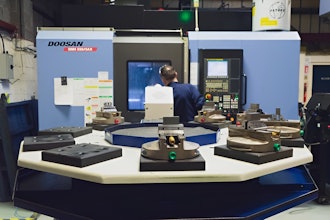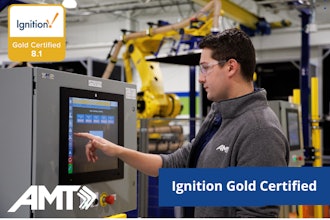
As manufacturers shore up their digitalization efforts and make their way toward Industry 4.0, they’ll likely find themselves in the market for software solutions that help maximize efficiency, unite disparate systems, improve quality, optimize production schedules, and streamline costs.
That said, many manufacturers may be new to the software and technology space. Parsec’s 2024 research found that 36 percent of manufacturers are implementing new technologies as a means of weathering supply chain challenges. This reflects a broader trend of companies turning to digital solutions to enhance resilience and adaptability. Some facilities may just be dipping their toes into advanced technology, and leaders might be (understandably) unsure of how to proceed with research, vetting, and purchasing.
Even for those who have purchased software before, the process can be tricky to navigate. In light of that, the question then becomes: what can manufacturers do to make the best, most informed decision for their facility? The answer—like the buying process itself—is multi-faceted.
What Makes Software Purchasing Complex?
The software market is vast, maybe dauntingly so. On the one hand, it’s good that technology offerings are as varied as the facilities they serve. Manufacturing leaders need to be able to identify and vet options that meet their team’s unique needs. On the other hand, if the number of options becomes overwhelming for potential buyers, it could lead to hasty decision-making, buyer’s remorse, or decision paralysis.
Channel partners (i.e., consultants, system integrators, or resellers who liaise between buyers and sellers) can be terrific resources during the research process. But even they can be inundated with products and vendors. They might not be connecting buyers with the best product to fit their needs; blind spots happen.
It’s also challenging to sell software “on paper.” Buyers may not be able to fully grasp all the capabilities a software solution has to offer. Even with detailed demos, FAQs, and screenshots galore, buyers might not get a complete sense of practical considerations like implementation, onboarding, and troubleshooting.
To be sure, vendors and channel partners do their absolute best to guide buyers through the process and address concerns. But in the realm of software, seeing is often believing—some manufacturers might not fully grasp a product’s capabilities until they see it operating within their own facility. There’s always some degree of a leap of faith with a software purchase.
Finally, like all buyers, manufacturers don’t know what they don’t know—which can make it difficult to perform research and ask informed questions. For instance, 30 percent of manufacturers have cited a lack of internal expertise as a barrier to adopting new technology, further complicating the decision-making process. Even with a skilled channel partner to help them find the right solution, manufacturers will still likely need to navigate a learning curve as they familiarize themselves with the available products and features.
Without adequate preparation, manufacturers may inadvertently prolong the software purchasing process and delay their facility’s optimization and digitalization—or worse, choose the wrong product altogether. But with a few key considerations in mind, they can filter through the noise and find the software that fits their unique needs.
Here are some preparation steps that can help simplify the purchasing process:
- Define clear requirements before you dive in. Working with the right technology partner means businesses won’t need to be experts when it comes to software. However, they should be well-versed in what their facility needs. This means mapping out aspirational KPIs, specifying use-cases, building a budget, and identifying timeline constraints—and all of this should occur before manufacturers connect with a software vendor. Depending on the scope of desired outcomes, a formal proof-of-concept might lend helpful context and perspective to leaders’ decision-making. When the time comes to begin the research process, manufacturers will be able to keep their organization’s challenges and goals top of mind.
- Look for flexible, extensible solutions. Manufacturing technology should adjust to a facility’s operations, not the other way around. Just because a solution is “out-of-the-box” doesn’t mean it can’t adapt to fit a facility’s unique constraints. Vendors with competitive solutions will highlight flexibility and extensibility as key features. This is noteworthy, seeing as flexible solutions will help manufacturers achieve the efficiencies associated with (and required of) digitalization. Without flexible tech, businesses risk boxing themselves into a solution that doesn’t quite fit—one that doesn’t let their team achieve true optimization.
- Crowd-source your research. The power of the internet is on the buyer’s side. Thanks to sites like Gartner and popular forums like Reddit and Discord, it’s now easier than ever for manufacturers to connect with current customers and hear their perspectives on a particular software solution. With intel on users’ lived experience implementing, using, and troubleshooting a particular product, manufacturers can gain a clearer picture of its strengths and weaknesses—and its compatibility within their own facility.
Selecting and purchasing manufacturing software doesn’t have to be a difficult process, but it does require a thoughtful, deliberate approach. If manufacturers give the research process the attention it deserves, they can rest assured knowing they’re making the right decision for their business.






















